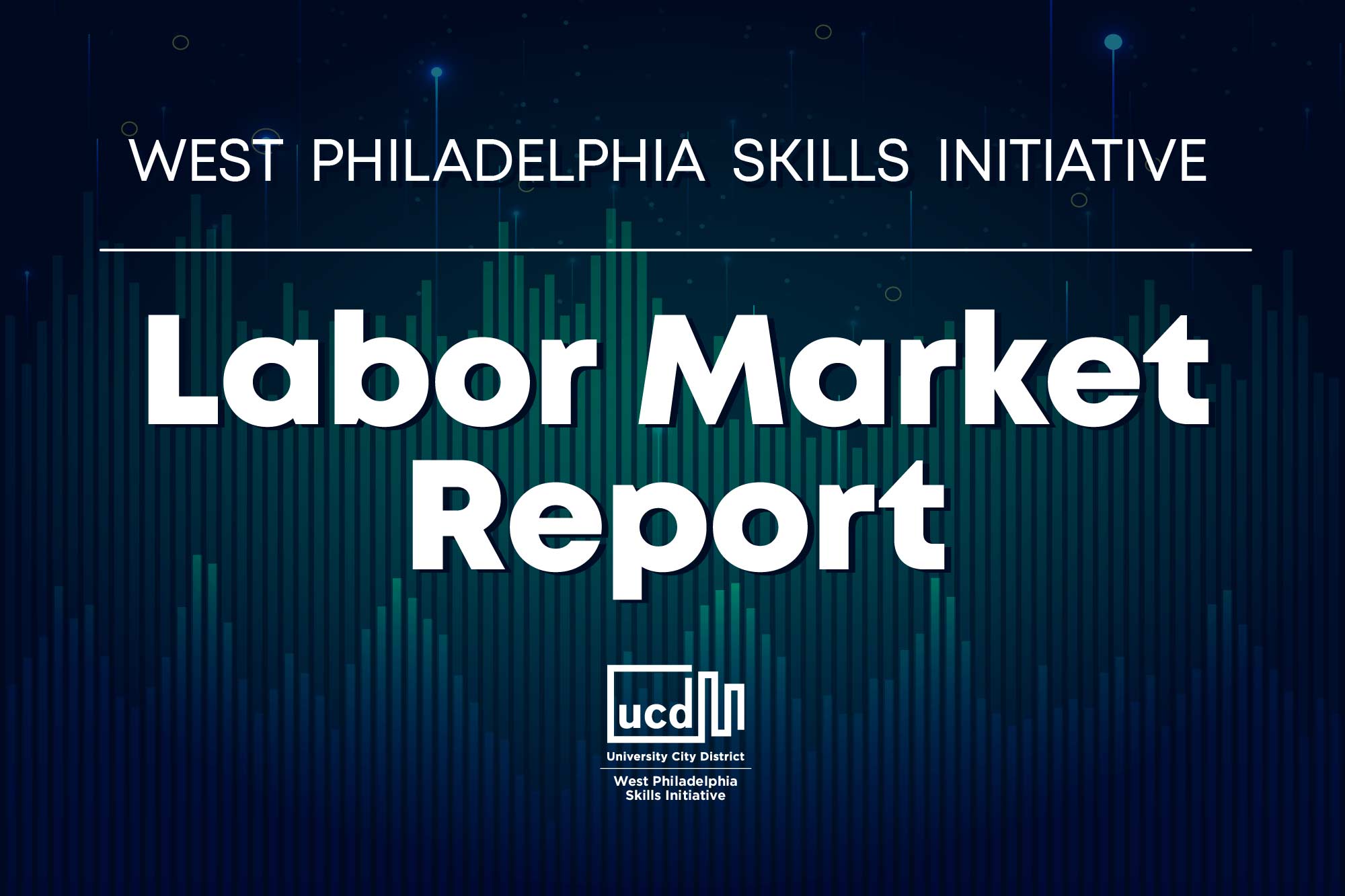Every other week, we will be publishing labor market industry (LMI) data and important trends to consider in the development of an equitable economic recovery from the COVID-19 crisis. We are always looking for opportunities to learn, grow, and collaborate. Email wpsi@universitycity.org to learn more.
At the West Philadelphia Skills Initiative, the calendar in our office still reads “March 2020.” Our signature program consists of 3 or 4 weeks of daily trainings in the classroom, with a variety of facilitators and daily seat changes. When we spoke about our work, we would highlight the connections made between participants, and the importance of being physically present. When it became clear that it would be months before we went back to in-person classes, we had to rework our entire approach to recruiting, selecting participants, and conducting trainings. Fortunately, WPSI provides a service that can be done virtually, with some tweaks. However, this isn’t the case for many others in the service sector.
The steady shift of the US economy from one based primarily on goods to one based on services is well documented. Cities like Philadelphia were once hubs of manufacturing, producing everything from fabric to ships to radios. After the shifts in industry to the southern US and overseas in the 70s, 80s, and 90s, cities began to re-invent themselves, with much of the growth coming from service-oriented jobs in education, medicine, hospitality, and tech.
COVID-19 shutdowns have impacted the way everyone works, but service jobs have been hit particularly hard. Thanks to two rounds of stimulus and expanded unemployment benefits, many consumers have shifted from spending money on eating out or travel to home improvement projects and electronics. That shift from consumer services to consumer goods is reflected in the types of employment that grew last year. As we’ve noted in prior blogs, Amazon, the largest supplier of consumer goods in history, saw job growth in the region increase by 1,597%, or 33,514 jobs over 2019, making up over 4.7% of all jobs posted in the region last year. Meanwhile, hospitals, educational institutions, and hospitality firms saw declines, as demand for services plummeted.
While it is important to note the overall trends, it’s also critical that we recognize who is most affected by them. Women and people of color make up a large percentage of workers in the service industry. The greatest increases in unemployment in Pennsylvania over the past year have been in the Hospitality, Education, and Health Care sectors – all fields that have been hubs of employment for women and people of color. Last month, a headline went viral stating that 100% of the job losses between November 2020 and December 2020 were due to women being laid off. While that doesn’t hold true in Pennsylvania, unemployment among women increased 312% between November 2019 and November 2020, while it increased just under 165% for men. When we look at race, the unemployment rate for black workers had increased by 601% between November 2019 and November 2020, while white unemployment had increased by 181%.
While many of us who worked in an office can still “go” to work every day, we can’t forget that the rapid shift from service-based jobs to goods based jobs during the COVID-19 pandemic has had a greater impact on the careers of women and people of color. A true equitable recovery will require addressing not just those effects, but the root causes of these disparities.
| Weekly Postings, Jan. 3rd – Jan 9th | Percentage Change from Feb 15th | Week over Week | ||||
|---|---|---|---|---|---|---|
| Industry | Phila Metro | Phila City | Phila Metro | Phila City | Phila Metro | Phila City |
| Health Care & Social Assistance | 2650 | 655 | -33% | -48% | 32% | -12% |
| Professional, Scientific & Tech Services | 953 | 433 | -41% | -36% | 29% | 13% |
| Retail Trade | 1154 | 129 | -27% | -50% | 40% | -35% |
| Finance & Insurance | 785 | 228 | -46% | -56% | 31% | -24% |
| Accommodation & Food Service | 690 | 127 | -38% | -78% | 12% | -31% |
| Manufacturing | 831 | 129 | -38% | -45% | 31% | -23% |
| Administrative & Support & Waste Mgmt | 555 | 128 | -39% | -44% | 32% | -10% |
| Educational Services | 750 | 380 | -34% | -24% | 103% | 195% |
| Transportation & Warehousing | 784 | 89 | 5% | -49% | 62% | -25% |
| Information | 305 | 149 | -49% | -54% | 83% | 60% |
| Other Services | 249 | 49 | -47% | -36% | 25% | 2% |
| Public Administration | 221 | 87 | -19% | -30% | 18% | 26% |
| Real Estate & Rental Leasing | 216 | 76 | -36% | -39% | 15% | -14% |
| Construction | 186 | 35 | -17% | -58% | -3% | -33% |
| Arts, Entertainment & Recreation | 73 | 23 | -50% | -62% | 1% | -38% |
| Wholesale Trade | 70 | 10 | -9% | 0% | 94% | 11% |
| Utilities | 72 | 17 | 47% | 113% | 118% | 6% |
| Mining, Quarrying and Oil & Gas | 20 | 7 | -49% | -36% | 33% | 17% |
| Mgmt of Companies & Enterprises | 14 | 3 | -68% | -73% | 0% | -40% |
| Agriculture, Forestry, Fishing and Hunting | 16 | 2 | -20% | -60% | -27% | -50% |
| Unspecified | 2848 | 885 | -41% | -49% | 19% | -8% |
| Total | 13442 | 3641 | -36% | -48% | 32% | -3% |
About the data: Data is sourced from Burning Glass Technologies Labor Insights, unless otherwise noted, covering job postings in the City of Philadelphia and the Philadelphia Metro Statistical Area (MSA), which is comprised of roughly a circle surrounding Trenton, Philadelphia, King of Prussia, Camden, and Wilmington. This data is then compared to a benchmark week of February 9th – 15th, which was the last week before the economic impact of COVID-19 began to be reflected in job posting data.

